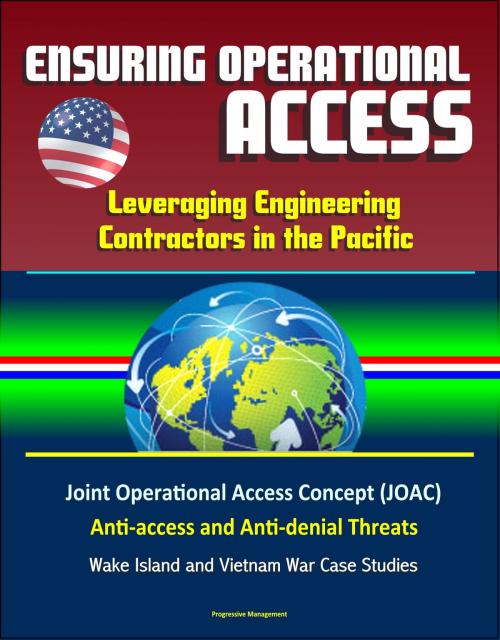Ensuring Operational Access: Leveraging Engineering Contractors in the Pacific - Joint Operational Access Concept (JOAC), Anti-access and Anti-denial Threats, Wake Island and Vietnam War Case Studies
Nonfiction, History, Military, Vietnam War, Asian, United States| Author: | Progressive Management | ISBN: | 9781370411856 |
| Publisher: | Progressive Management | Publication: | February 14, 2017 |
| Imprint: | Smashwords Edition | Language: | English |
| Author: | Progressive Management |
| ISBN: | 9781370411856 |
| Publisher: | Progressive Management |
| Publication: | February 14, 2017 |
| Imprint: | Smashwords Edition |
| Language: | English |
This excellent report has been professionally converted for accurate flowing-text e-book format reproduction. In January 2012, President Obama announced the US military would "pivot to the Pacific" to support and protect political and economic interests in the Region. To this end, the Joint Operational Access Concept (JOAC) and Joint Concept for Entry Operations (JCEO) outline the specific operational requirements for gaining and maintaining operational access against anti-access/anti-denial threats. The joint engineer force supports operational access through the construction and repair of bases and supporting infrastructure. However, after over a decade of stability operations, the joint engineer force is inexperienced and ill prepared to support operational access for major operations in the Pacific Region. Using the theoretical lens of operational art, this study proposed the thesis that by supplementing existing engineering capabilities with construction and engineering support contractors, joint force commanders can ensure operational access.
This study concluded that integration of construction and engineering support contractors during Phase I (Deter) and Phase II (Seize the initiative) operations allows joint force commanders to gain operational access by establishing and maintaining basing, maintaining operational tempo, and extending operational reach. Construction and engineering support contractors achieved this by demonstrating expeditionary capabilities and by providing expert and innovative solutions to military engineering problems. Additionally, the evidence suggests that the strategic context of a given operational environment, such as dispersed or concentrated basing, may govern the US military's ability to ensure interoperability with contractors while achieving operational access. Operational planners must clearly evaluate existing military engineering capabilities and operational requirements to identify specific engineering gaps. As part of the Total Force, construction and engineering support contractors serve as a viable option to help the US military achieve strategic objectives in the Pacific Region.
This excellent report has been professionally converted for accurate flowing-text e-book format reproduction. In January 2012, President Obama announced the US military would "pivot to the Pacific" to support and protect political and economic interests in the Region. To this end, the Joint Operational Access Concept (JOAC) and Joint Concept for Entry Operations (JCEO) outline the specific operational requirements for gaining and maintaining operational access against anti-access/anti-denial threats. The joint engineer force supports operational access through the construction and repair of bases and supporting infrastructure. However, after over a decade of stability operations, the joint engineer force is inexperienced and ill prepared to support operational access for major operations in the Pacific Region. Using the theoretical lens of operational art, this study proposed the thesis that by supplementing existing engineering capabilities with construction and engineering support contractors, joint force commanders can ensure operational access.
This study concluded that integration of construction and engineering support contractors during Phase I (Deter) and Phase II (Seize the initiative) operations allows joint force commanders to gain operational access by establishing and maintaining basing, maintaining operational tempo, and extending operational reach. Construction and engineering support contractors achieved this by demonstrating expeditionary capabilities and by providing expert and innovative solutions to military engineering problems. Additionally, the evidence suggests that the strategic context of a given operational environment, such as dispersed or concentrated basing, may govern the US military's ability to ensure interoperability with contractors while achieving operational access. Operational planners must clearly evaluate existing military engineering capabilities and operational requirements to identify specific engineering gaps. As part of the Total Force, construction and engineering support contractors serve as a viable option to help the US military achieve strategic objectives in the Pacific Region.















